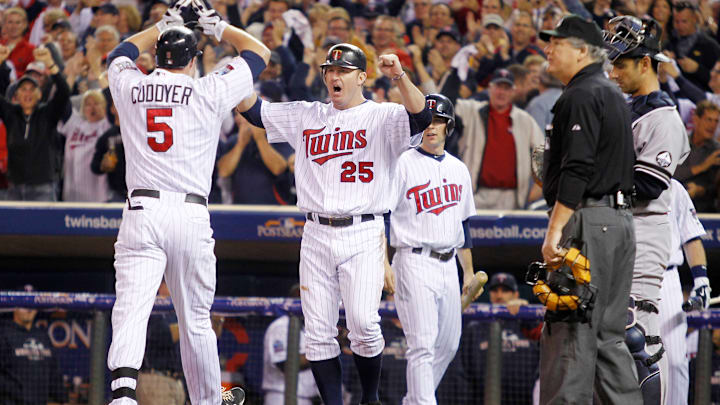You might have recently heard someone mention something called the Immaculate Grid and wondered what it is.
Each year it seems there’s a new viral internet game that goes around and turns into an obsession. At this time we’d like to pour one out for perhaps the OG viral game, HQ Trivia. Remember that? Where for a few minutes each day that Scott guy had offices everywhere in an absolute chokehold while everyone tried to win some money answering trivia questions?
It seems like ages ago, but the lifecycle of these things in the digital age are brief. Where HQ might have blazed a trail, others like Wordle have come along to seize the day and find a way into the zeitgeist.
The latest addition to the viral internet game tribe is the Immaculate Grid, which right now is focused on baseball but seems primed to take over the lives of sports fans everywhere the same way Wordle and HQ did for others before.
What is the Immaculate Grid?
Essentially, someone took the ‘Guys will literally name random sports things than go to therapy’ concept and merged it with Sudoku and Wordle.
The result is the Immaculate Grid.
Each day a new grid generates with nine tiles and six corresponding tokens. These tokens are either a team logo or a baseball stat such as ‘30 home run, 30 stolen base season’. In order to get a point you have to guess a player that fits the box that combines the two tokens.
Here’s what it looks like:
Immaculate Grid 81:#immaculategrid #mlbconnectgridhttps://t.co/4raWyQmE70
— Immaculate Grid (@immaculategrid) June 23, 2023
Retweet or reply with your score! pic.twitter.com/gYMCuU0wFE
For example, one box could have the Twins logo and the could have ‘25+ home run season’. The answer would be Jim Thome, who hit 25 home runs for Minnesota in 2010. Getting it wrong costs you a guess, of which you only get nine.
There are nine boxes, which means you can’t miss a single guess otherwise you won’t get a perfect score where all of the tiles are filled. That’s what makes it immaculate, because someone who doesn’t cheat would prove their baseball knowledge on a whole new level by getting every single box filled on nine straight attempts.
Where the Immaculate Grid differs from things like Wordle is there are potentially multiple right answers per each box. So, for instance, if the grid intersection is a Twins logo and a Yankees logo, there are multiple correct answers as to which players have played for both franchises.
Players only get one guess per day, which means once your nine guesses are used up you have to wait for the next day’s grid to generate in order to play again. The idea isn’t necessarily to get it perfect on your first attempt — or any attempt — rather to see how close you can get to showing off immaculate baseball knowledge to all of your fellow fans.
